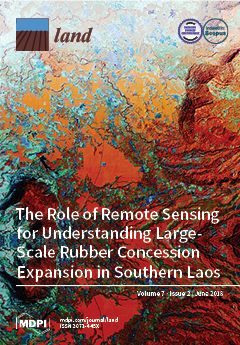Resource information
Land Use and Land Cover (LULC) classes defined by subjective criteria can diminish the significance of a study, hindering the reproducibility and the comparison of results with other studies. Having a standard legend for a given study area and objective could benefit a group of researchers focused on long-term or multidisciplinary studies in a given area, in the sense that they would be able to maintain class definition among different works, done by different teams. To allow for reproducibility, it is important that the classes in this legend are described using quantifiable elements of land cover, which can be measured on the ground, as is recommended by Land Cover Meta Language (LCML). The present study aims to propose LCML formalized hierarchical legends for LULC classes, focusing on the southwest of Pará state, within the Brazilian Amazon. In order to illustrate the potential of these legends, a secondary objective of the current study is to analyze classification results using legends derived from a particular Remote Sensing dataset and compare these results with the classification obtained using the LCML hierarchical legend proposed. To perform this analysis, firstly, we proposed a conceptual class model based on existing classification systems for the upland Brazilian Amazon Biome. From this model, 16 LULC classes were described in LCML, using quantifiable and easily recognizable physiognomic characteristics of land cover classes measured on the lower Tapajós river, in Pará state. These classes were grouped into legends with different levels of detail (number of classes), based on our model or on the image and clustering algorithms. All legends were used in supervised classification of a Landsat5/TM image. Results indicate that it is necessary to incorporate multi-temporal knowledge for class definition as well as the proposed thresholds (height and cover proportion of soil, litter, herbaceous vegetation, shrubs, and trees) in order to properly describe classes. However, the thresholds are useful to delimit classes that happen in a successive way. Classification results revealed that classes formed by the same elements of land cover with similar thresholds present high confusion. Additionally, classifications obtained using legends based on the class separability in a given Remote Sensing image tend to be more accurate but not always useful because they can hide or mix important classes. It was observed that the more generalized the legend (those with few details and number of classes), the more accurate the classifications results are for all types of legends.


